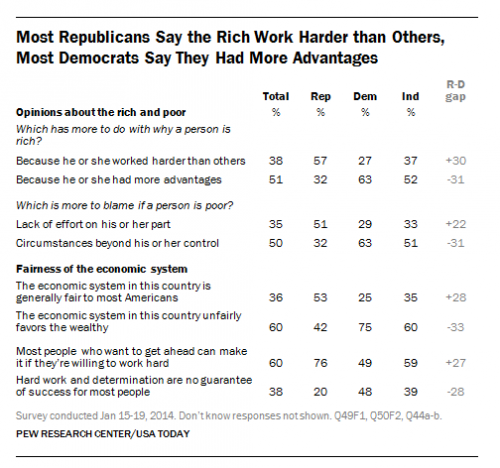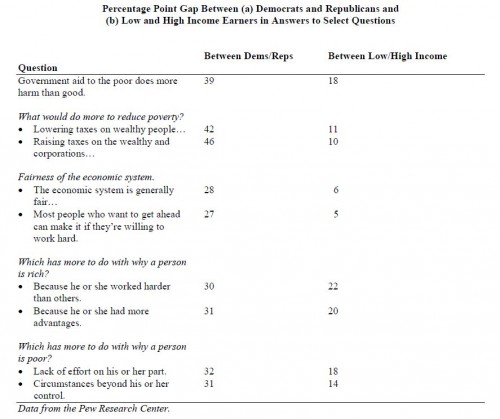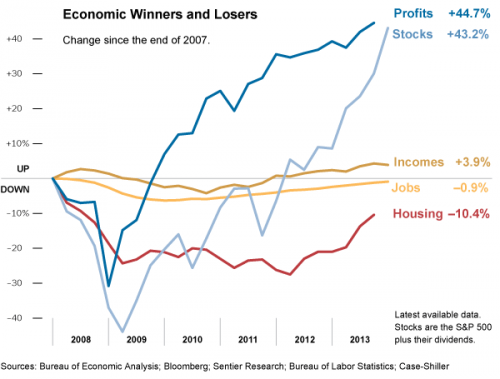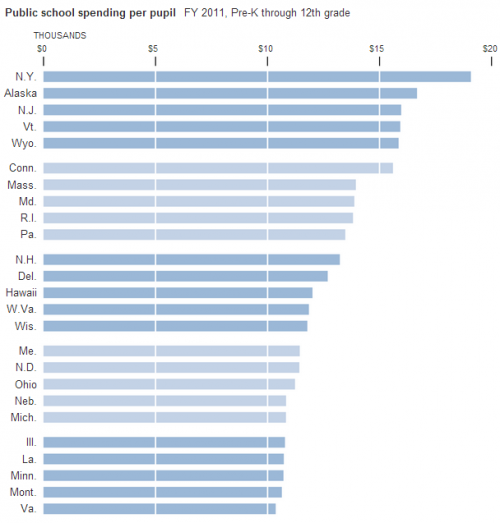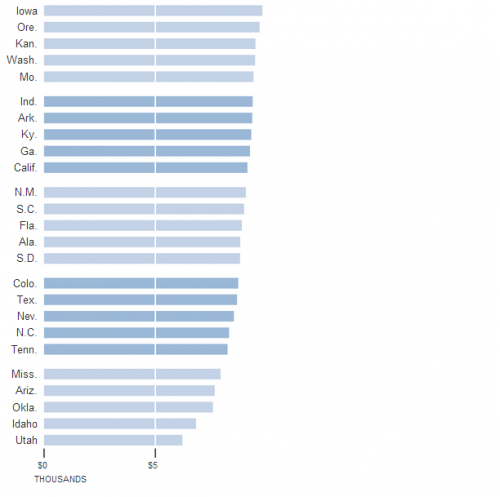A majority of both Democrats and Republicans believe that economic inequality in the U.S. has grown, but they disagree as to its causes and the best solutions, according to a new survey from the Pew Research Center. While 61% of Republicans and 68% of Democrats say inequality has widened, only 45% of Republicans say that the government should do something about it, compared to 90% of Democrats. A study using the General Social Survey has confirmed the findings.
Republicans and Democrats also disagree about what the best interventions would be. At least three-quarters of Democrats favor taxes on the wealthy and programs for the poor, but 65% of Republicans think that helping the poor does more harm than good.
The differences may be related to beliefs about the cause of poverty. Republicans are much more likely to endorse an individualist explanation (e.g., people are poor because they are lazy), whereas Democrats are more likely to offer a structural explanation (e.g., it matters where in the class structure you begin and how we design the economic system).
Interestingly, answers to these questions vary much more by political affiliation than social class. Using data from the survey, I put together this table comparing the number of percentage points that separated the average answers to various questions. On the left is the difference by political party and, on the right, income (click to enlarge).
Clearly political affiliation drives opinions on the explanation for and right solutions to income inequality more so than income itself.
This is a great example of hegemony. A hegemonic ideology is one that is widely supported, even by people who are clearly disadvantaged by it. In this case, whatever you think of our economic system, it is pretty stunning that only there is only a six point gap between the percent of high income people saying it’s fair and the percent of low income people saying so. That’s the power of ideology — in this case, political affiliation — to shape our view of the world, even going so far as to influence people to believe in and perhaps vote for policies that are not in their best interest.
Cross-posted at Pacific Standard.
Lisa Wade, PhD is an Associate Professor at Tulane University. She is the author of American Hookup, a book about college sexual culture; a textbook about gender; and a forthcoming introductory text: Terrible Magnificent Sociology. You can follow her on Twitter and Instagram.


